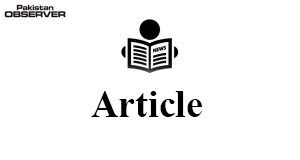Dr M Athar Khan
THE two nomenclatures ‘Institution of Islamic Education’ and ‘Islamic Institution of Education’ are clearly definable in reference to their goals, scope and organization. The former denotes an institution, which organizes teaching and learning in the specific field of knowledge relating to the fundamentals, principles and practices of the Islamic faith and religion: Whereas the latter denotes the system and institution that are concerned with organizing teaching and learning in areas that relate to all aspects of life—the Islamic faith and religion being just one of them. In other words the Islamic Institution of Education is more inclusive and has a broader scope than the institution of Islamic education, which only represents a part of it.
Madrassah as the Islamic institution of education is more of a concept. It exists as an entity in itself and functions to achieve its objectives independent of predetermined and describable objects and things prefixed ‘educational’ eg educational buildings, materials, personnel (teacher) etc. Examples: Hira, a cave Madrassah—no building, no teacher, no books, no curriculum— only one student being prepared for the greatest mission of Prophethood. Dar-e-Arqam, a home Madrassah—only few students, one teacher, curriculum (Islam), textbook (Qur’an) students being prepared to confront and conquer a hostile world. Mosque, students undefined, unlimited being disciplined and educated as Muslims. Suffah, non-formal (open university) residential-cum-day institution preparing leaders for the great mission of Islam. Similarly Open place, teacher’s home, residence, work place, library, formally structured buildings, campuses, and facilities—all of these places as Madrassah have their own distinguishing educational features and record of their proven value in the world of Islam. Several of the inherent features of these Madrassah places as institutions of education provide model and guidance for the present day modern world education institutions.
With the downfall of the Muslim world empire, it certainly would have been with purpose that the nomenclatures ‘Institution of Islamic Education’ (the Madrassah as it is known today) was confused with Madrassah ‘the Islamic Institution of Education’ of Islam. The nomenclature Madrassah was derogatorily used to denote the institution that only produce orthodox Muslims and men for mosque services who had no place in the public sectors. The Madrassah for all purposes and in all meanings denotes the Islamic Institution of Education. It has its own philosophy, scope, system and organization, which are derived from and based upon the education concepts and principles the Qur’an and teachings of the Holy Prophet (SAW). Hence they are true and absolute for all times and all people especially so for the world of Islam.
The basic philosophy of Madrassah emanates from the very first word of the revelation Iq’ra’. The Arabic root word of Iq’ra is qra. In different contexts as it has been used in the text of the Qur’an, it has different meanings with reference to the Islamic and Qur’anic concepts of Ilm. It is used to denote reading, learning, making others learn (teaching), declaring, compiling knowledge, connecting and establishing relevance with past and other knowledge and experiences, and preserving and safeguarding the stock of knowledge. Ilm in its wholeness implies both knowledge and action as complementary to one another i.e. action without Ilm is same as ‘jumping into the dark’, whereas the Ilm without action is like a ‘tree that bears no fruit’. The verse, “Iq’ra, in the name of your Lord, Who created,” (96:1) defines the goal of Madrassah being none other than ‘organizing and disseminating Ilm in obedience to and for carrying out the will and command of Allah (SWT).
Scope of Madrassah is implied in the purpose of creation of man, which is “nothing else other than Ibaadah.” (51:56). The word Ibaadah signifies a three-fold responsibility of man that includes (i) responsibility to Allah (SWT)—obeying and carrying out Allah’s (SWT) orders without questioning them, (ii) responsibility to oneself—living life within the limits of awamir (do’s) and nawahee (don’ts), and use of all that is halaal (permitted) and abstinence from Haraam (prohibited), and (iii) responsibility to the Ibaad (all humans, animals, plants, elements and things in general that concern man in life in any way). Accordingly Madrassah as the Islamic institution of education is concerned with organizing education in areas of (i) Islamic faith, principles and practices, (i) physical, mental and spiritual development of the student and (iii) social and natural sciences and technologies relating to occupational lives and undertakings of students. —To be continued.
—The writer is Prof & Advisor to the VC, Sarhad University, Peshawar.









